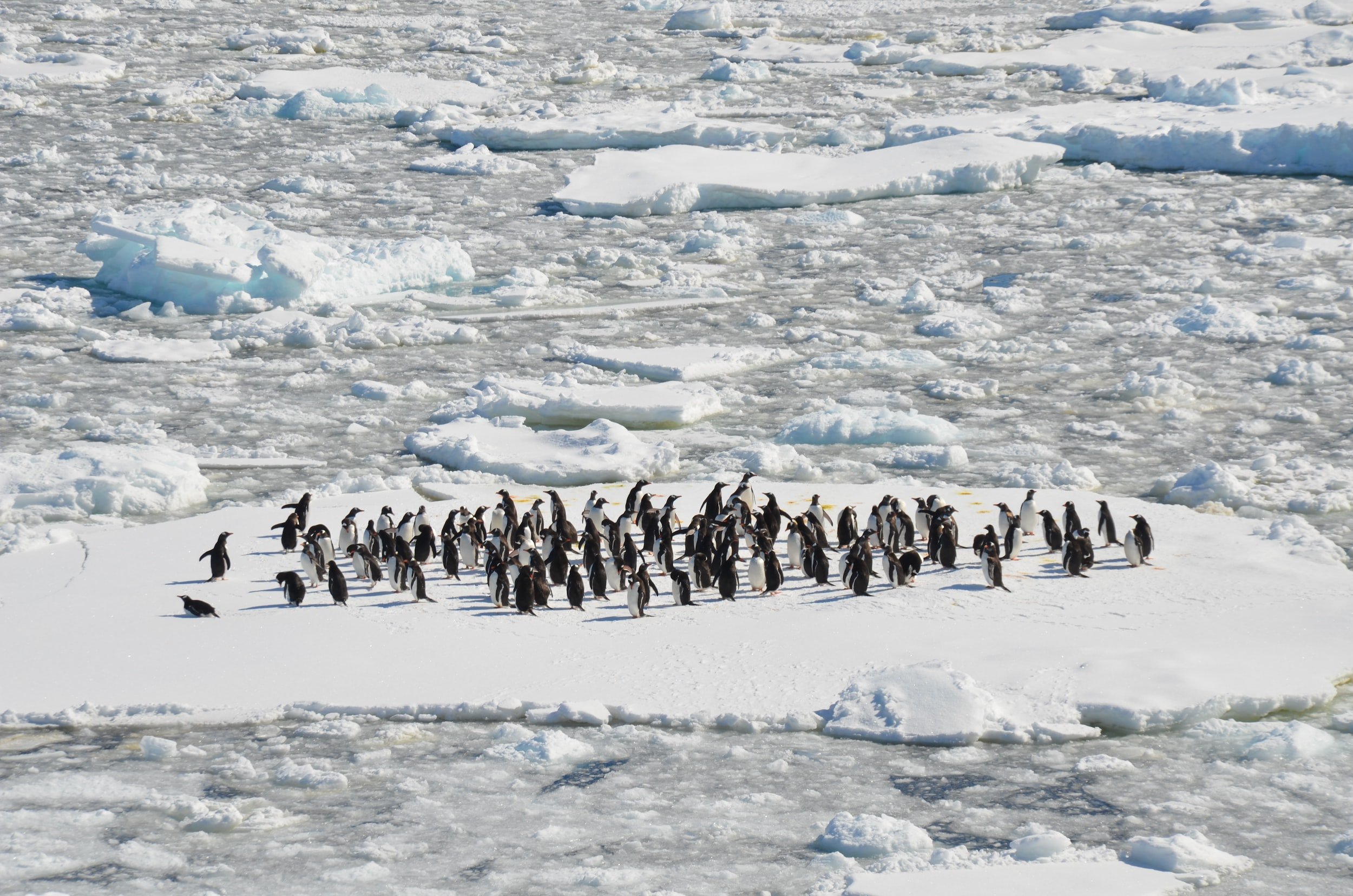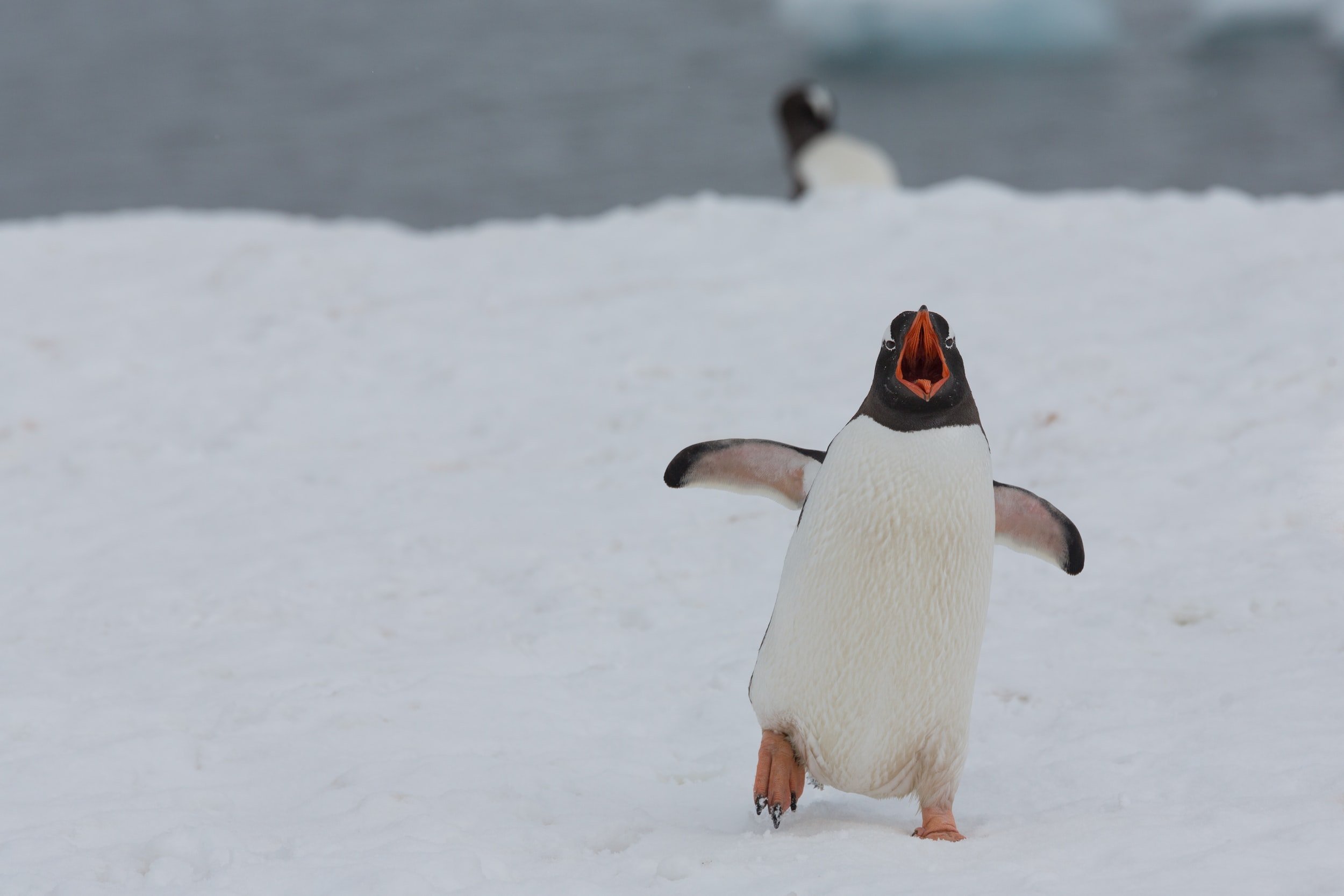Teaser Trailer
Behind the scenes
Sequencing for Survival
-

Synopsis.
What have years of breeding in captivity done to penguins’ DNA? What can the seabirds tell us about the ocean’s health? Could declining numbers of penguins amidst climate change mean humans are next? And what can we learn from the birds’ intricate social structure?
Sparked by autistic journalist and conservationist Katherine Hobbs’ lifelong adoration for penguins, Sequencing for Survival is a quest for answers about the fate of the sentinel species. With her friend Josh Torres in tow, Katherine takes viewers on a journey around the world to share in her passion and curiosity.
Together, Katherine and Josh ask leading penguinologists their burning questions and cultivate a renewed hope for the future of our planet.
The vlogumentary style highlights their grumpy x sunshine dynamic and gives viewers a virtual plus one on their adventures.
-

Content description.
Sequencing for Survival will be presented as a 10-episode docuseries with 12-minute episodes. Filmed with a digital audience in mind, the series is aimed at viewers who straddle the millennial and Gen-Z age bracket.
This series is ideal for a young-adult audience who values scientific storytelling and seeks comprehensible answers to complex questions. This audience grew up with Animal Planet’s Zooventure and PBS Kids staple Bill Nye the Science Guy. As adults, they still favor scientific communication that includes them, like NOVA’s Antarctic Extremes.
Foley and NAT sounds, along with mixed and mastered audio creates an immersive soundscape. Additionally, the docuseries will include an original score and theme utilized throughout the program.
Not only is Sequencing for Survival accessible to its audience, but it’s also aspirational. Twenty-somethings are finding their feet in the world. The decade that used to be reserved for establishing families and planting roots has shifted to be one of self-discovery, community formation and adventure.
As Katherine and Josh travel to remote corners of the Earth, they learn more about the interconnectedness of all species, their friendship and what the world looks like through the eyes of one another.
-

Why us?
Katherine's undergraduate research focused on identifying correlations between captive and endemic Gentoo penguins' phylogenetic trees via analyses of their mtDNA and observable behavior to create more successful breeding programs which prepare Gentoo penguins for potential reintegration into the wild.
She made valuable connections with leading scientists studying Magellanic and Gentoo penguins throughout her research. As a result, she feels confident in marrying her research and storytelling abilities to captivate audiences.
Katherine's strongest skills include her research, creativity, scientific storytelling, leadership, and demonstrated ability to produce scientific programming.
Josh is excited to join her on her adventures as Sequencing for Survival’s director and cinematographer. He has been worked in public media as videographer and director for the past seven years and is proficient in broadcast equipment and editing software. He is excited to help Katherine bring her vision for this program to life.
In the years that Katherine and Josh have worked together, they have developed a great working relationship and friendship. They communicate honestly and offer each other feedback to improve continuously. Their skill sets complement each other well. They are confident that they are the right team to tell this story.
-

Why now?
DNA sequencing is on the precipice of becoming a best practice for conservation breeding programs. The Species Survival Plan is now utilized in every AZA-accredited facility in the U.S. We have the access and community interest necessary to personalize this story to any community with a zoo or aquarium.
Climate change is an undeniable factor in the penguin population decline, an issue public media audiences care deeply about. This is exemplified by the success of Katherine’s penguin conservation stories aired in Florida, Texas and nationally.
While The New York Times, BBC, Disney Nature, and National Geographic have covered aspects of this story, we believe that we are uniquely situated to share the fullest version with curious young adults.
-

Crew.
Co-hosts: Katherine Hobbs & Josh Torres
Director & cinematographer: Josh Torres
Executive producer & research lead: Katherine Hobbs
Editor & drone pilot: Yfat Yossifor
Social media manager & composer: Isabella Lee
Foley & audio mixing: Miriam Ganas
Graphic designers: Katarina Middleton & Jeremy Hobbs
Field assistants: Cara Hammock, Rebekah Peltz, Brendan Rivers, Andy Weir
-

Locations.
The 11th International Penguin Congress, Vina Del Mar, Chile
Chubut Province, Argentina
Ushuaia, Argentina
The Jacksonville Zoo and Gardens
Loveland Living Planet Aquarium
Sources.
Katie Propp, Conservation Education Manager, Penguins International | Mike Taylor, Curator of Herps and Birds, Jacksonville Zoo and Gardens | Fatima Ramis, Conservationist, Jacksonville Zoo and Gardens | Meredith Perskey, veterinarian, Jacksonville Zoo and Gardens | Steve Vogel, penguin curator, Loveland Living Planet Aquarium | Dr. Pablo Garcia Borboroglu, founder, Global Penguin Society | Penguin keeper team, Loveland Living Planet Aquarium | Assorted penguinologists, International Penguin Congress | Dr. Eric Domyan, The Domyan Lab, Utah Valley University | Dr. Tom Hart, leading penguinologist, Oxford University
